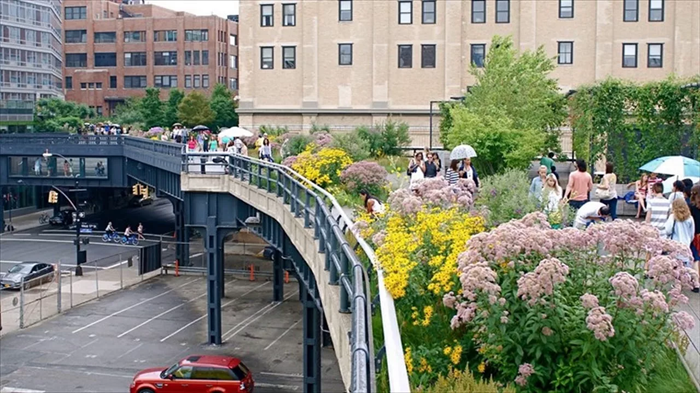Parks in big cities tend to be seen as refuges, green islands amid a sea of concrete and steel. When you approach the High Line in the Chelsea neighborhood of Manhattan’s Lower West Side, the first thing you see is what parks are supposed to be a refuge from—a stark, heavy, black steel structure supporting an elevated railroad that once hauled freight cars directly to factories and warehouses, and it looks, at least from a distance, more like an abandoned relic than an urban oasis.
Until recently, the High Line was, in fact, an urban relic. Many of its neighbors, as well as New York City Mayor Rudolph Giuliani, for much of the 1990s, couldn’t wait to tear it down. The administration, aware that Chelsea was undergoing gentrification, sensed how unsightly the railroad would be in the redeveloped area. They were convinced that it had to be removed to realize its full potential.
Never have officials been more wrong. Nearly a decade after the Giuliani administration tried to destroy the High Line, it has been transformed into one of the most innovative and inviting public spaces in New York City, and perhaps the country. The black steel columns that once supported the abandoned railroad tracks now hold up a raised park—part waterfront, part city plaza, part botanical garden.
The first section of the High Line, which begins at Gansevoort Street and extends to West 20th Street, crossing Tenth Avenue along the way, opened in the summer of 2009. The second section opened on June 7, 2011, extending the park to 30th Street. On September 21, 2014, the park opened a third section running west along 30th Street, north along 34th Avenue, and east along 12th Street to 11th Avenue. The park currently measures 1.43 miles (2.33 km) in length.


